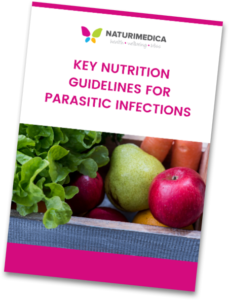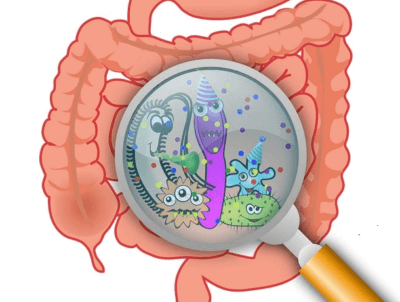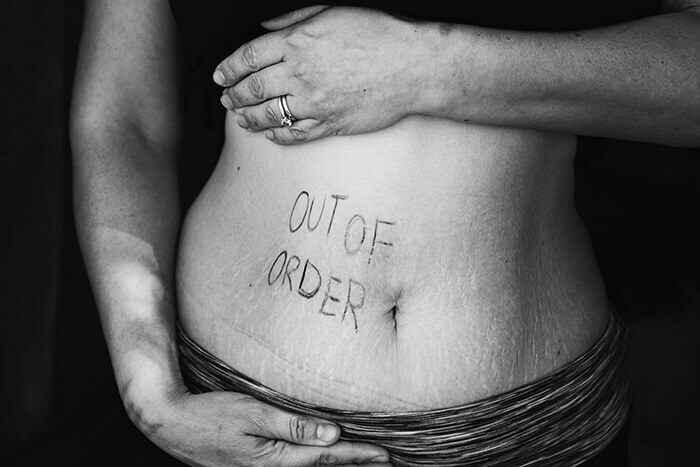Overview of current research on Blastocystis
Research into Blastocystis hominis (Blastocystis) is a growing area of interest around the world as it’s estimated that over 1 billion people have this parasite in their gastrointestinal tracts.
There are conflicting reports of the health effects of Blastocystis’ presence in the large intestine on the gut and overall health, and a reliable detection/ testing for Blastocystis and other intestinal parasites is of key importance for effective treatment – natural, conventional or a combination of both.
It’s a fact that many people who have this parasite feel healthy and don’t have the associated gut symptoms such as diarrhoea, bloating, cramping or pain; whilst others seem to be adversely affected (including gut and other symptoms such as fatigue, brain fog, joint pain and others).
It’s known that Blastocystis can live in the large intestine for a long time (i.e. months or years) after it was acquired, usually through contaminated water or food.
According to Rune Stensvold, a leading researcher in this area, many species of Blastocystis have been discovered, of which at least 9 have been found in humans so far. Such species are currently termed “subtypes” (STs). For example subtypes ST1, ST2, ST3 and ST4 are common in Europe.
While ST1, ST2, and ST3 appear to have equal prevalence in patients with diarrhoea and healthy individuals, ST4 appears to be epidemiologically linked to diarrhoea and/or chronic conditions such as irritable bowel syndrome (IBS).
Rune Stensvold states that there is no known efficient eradication strategy for Blastocystis using conventional drugs, and that successful eradication of Blastocystis is far from straight forward due to drug resistance, treatment failure, and reinfection.
Although Flagyl (Metronidazole) is often prescribed for Blastocystis infections, there are conflicting reports on its efficacy. Even in combination with other drugs such as Paromomycin, Blastocystis eradication can’t be guaranteed.
In October 2018 the 2nd International Blastocystis Conference took place in Bogota, Colombia. Here are the key conclusions as reported by Rune Stensvold:
- At present, we can’t totally dismiss pathogenicity of Blastocystis; if existing, it may involve both strain- and host-specific factors.
- Blastocystis comprises many different organisms with different genetic makeups. There is variation not just between subtypes, but also within subtypes. Therefore it can’t be categorically stated that “Blastocystis is either a commensal (neutral or beneficial) or parasite because different Blastocystis isolates could be commensals or parasites depending on the host, the genetic makeup of the parasite and the microbiota with which they interact”.
- The diversity of Blastocystis in humans and animals is huge — new lineages are being continuously revealed.
- More research is needed to establish how Blastocystis interacts with or responds to other gut microbes and the immune system.
My clinical experience with Blastocystis infections
Most people who come to my clinic have had gut issues for many years without having their complaints and symptoms properly investigated by a health professional experienced in addressing chronic gut disorders.
These unchecked issues include SIBO (small intestine bacterial overgrowth), Coeliac disease, H.Pylori and other parasitic and worm infections; reflux (heartburn) or bacterial dysbiosis (bacterial imbalances in the gut), to name a few.
I find that most medical professionals such as GPs are either unaware of treatment options other than antibiotics or reluctant to do further investigations beyond the broad IBS diagnosis.
Here’s a common scenario as reported by many clients: a client goes to see their doctor because they have troubling gut symptoms such as diarrhoea, cramping, bloating, gas or constipation. They are diagnosed with IBS (a very broad diagnosis) often without any testing, or sometimes they may get a simple stool test (not CDSA = comprehensive diagnostic stool analysis) and when parasites are detected they think they found the cause of their gut problems.
So, usually the first assumption is that the parasites must be the source of ALL their gut symptoms. This is further confirmed by consulting Dr Google and reading many blogs on the subject – Blastocystis is quite ‘famous’ on the internet!
I also hear from clients that doctors mostly consider having parasites as normal and ‘not much to worry about’. However, as mentioned above, the research clearly indicates that Blastocystis is not ONE type of organism, it has different subtypes and we don’t know yet if that makes a difference in classifying Blastocystis as beneficial, neutral or a parasite.
Subsequently, as therapists we need to consider all options and investigate them accordingly, based on presenting symptoms and health outcomes for each person.
After the parasites are found in a stool sample, doctors often prescribe a course of antibiotic called Flagyl (Metronidazole), the patient takes it and they may get temporary relief, but more often than not Flagyl doesn’t work and the symptoms return.
So, they take the drug again hoping this time it will be different, and it doesn’t work, some may take it again to no avail, but in the meantime significant gut problems can develop caused by repeated doses of antibiotics which significantly alter gut flora and microbiome balance, significantly effecting the immune and digestive functions.
Flagyl, or other antibiotics, will kill off some of the gut bacteria (beneficial and harmful) in the short term resulting in the reduction in unpleasant symptoms for the time being. However, if a person takes antibiotic(s) which brings them a relief in the short term but further down the track they feel unwell again, it may be the case that the ‘bad’ bacteria were killed by the antibiotic for a period of time.
This provided a relief of symptoms first, but as the parasites grow back again and harmful bacteria multiplies, the symptoms come back – sometimes the symptoms are worse than before.
In my experience, this suggests that a person may have bacterial dysbiosis (i.e. imbalances of gut flora including pathogenic bacteria) and this could be the primary cause of their symptoms. Therefore the dysbiosis should be investigated and dealt with first, rather than trying to eradicate Blastocystis which could be only a bystander and may be removed by the microbiome rebalancing treatment alone.
As stated above, we know that antibiotics have damaging effects on the good bacteria present in the gut (as well as the ‘bad’) which may take years to rebuilt or recover, IF EVER. Hence in the end many people end up sicker after the antibiotics then before often developing ‘leaky gut’ leading to reactions to multiple foods, chemicals or additives, since their gut is now damaged and can’t function properly.

Importantly, this also affects the immune system that regulates the removal of unwanted bugs and also dealing with food tolerances and sensitivities.
Needless to say, nutrition plays an important part in any treatment and there are specific foods that help with parasite eradication. Here’s a sample of them:
Download the Key Nutrition Guidelines for Parasitic Infections HERE.
If only these individuals had the opportunity to consider and investigate other gut imbalances first up before taking antibiotics!
For example, starting with addressing ‘leaky gut’ (increased intestinal permeability) first and then checking an overall microbiome health, and addressing it using specific natural remedies such herbs, probiotics, prebiotics, specific foods and dietary adjustments, or sleep and stress reduction.
What about people with debilitating long-term gut issues?
In some cases, neither antibiotics nor natural medicine can help, and the key to regaining health may need to be faecal microbial transplant (FMT) which puts healthy microbiome species obtained from healthy donors back in the colon, rebuilding gut ecosystem from scratch.
This may be necessary for some people with significant C.difficile infections which can be particularly difficult to treat. However, there are important consideration to take into account before taking this option (not discussed here).
Importance of accurate testing for Blastocystis and other parasites
The key to understanding what’s happening in the gut is performing comprehensive stool analysis tests that use PCR technology. A PCR stool test (polymerase chain reaction) looks for DNA of different gut species including parasites.
Unlike the traditional culture methods which result in only 50% of the gut microbial data being analysed, the DNA/PCR assay can detect many more organisms due to its ability to identify genetics of the microbes, even if they are no longer alive in the stool sample.
PCR testing is part of comprehensive stool tests which also measure the level of dysbiosis (i.e. imbalances of gut flora including pathogenic bacteria), digestion of protein, fats and carbs; pancreatic function, gut pH, calprotectin, sIgA (secretory immunoglobulin A), butyrate levels and other digestive markers.
Most doctors refer for a simple PCR test of one stool sample to test for 8-10 parasites, depending on the lab. This may not be enough to detect parasites, as we know that they shed irregularly when they go through their various life stages (from eggs to adults), and there are periods when they may not appear in stool.
Therefore to obtain more accurate results (especially in challenging cases), it’s important to test at least three or more samples over 5 days or so, to get more reliable results, particularly when the PCR results are negative but a clinical picture and other pathology results (such as low iron levels or elevated eosinophils) suggest the presence of parasites. Check out this study on Irregular shedding of Blastocystis hominis (Venilla et al 1999).
As a result of thorough testing, I often find that clients have significant microbiome imbalances contributing to the presence of parasites, and Blastocystis may not even be their main problem or the cause of their gut problems to start with. Instead, the symptoms can be the results of:
- SIBO
- Leaky gut
- Gut dysbiosis
- Candida
- Other parasites such as giardia, cryptosporidium or H.Pylori
- Crohn’s disease or ulcerative colitis
- Post infective IBS (post severe food poising)
- Lactose or fructose intolerance
- Lyme disease
- Thyroid disease
- Viruses such as Epstein Barr
- Antibiotic-induced gut/ nerve damage in the gut
- Hiatal hernia
- High stress – flight or fight response diminishes digestion and absorption
By identifying and addressing the above gut imbalances FIRST, clients start to feel better, the symptoms decrease or disappear, and many of them end up avoiding the antibiotics altogether.
I find this particularly applies well to children who have much better recovery rates, after addressing their gut problems with tailored supplements (often without using any antimicrobial herbs i.e. herbal ‘antibiotics’) and specific dietary changes.
Having stated the above, sometimes after thoroughly investigating options and potential causes, we find nothing else but Blastocystis as the cause of the symptoms. In such cases, the parasite(s) needs to be treated with either antimicrobial herbs, antibiotics or a combination of the two, depending on circumstances.
Some people opt for the Faecal Microbiota Transplantation (FMT) as the last resort. Read more about it in my post about natural parasite treatment.
Testing for Blastocystis – top tests for gut parasites and microbiome

I’d like to emphasise that only longer-term post treatment testing after finishing antibiotics or herbs,can verify if it worked, i.e. testing at least 8 weeks AFTER finishing antibiotics and one week after stopping all probiotics (especially S.boulardii), to significantly reduce the risk of a ‘false negative’ reading i.e. the Blastocystis is still there but the test falsely says it isn’t.
Depending on client’s circumstances, I refer for the following comprehensive stool tests:
- GI Map by Diagnostic Solutions using PCR technology for parasites and bacteria plus testing for other key gut markers.
- GI Effects by Genova using PCR technology for parasites and bacteria plus other key gut markers. Very good for solving many long-term gut issues resistant to treatment, and for post-antibiotic treatment to assess gut flora (microbiome) status or damage.
- Complete Digestive Stool Analysis (CDSA) test with PCR.
- Basic PCR stool test – this test is free in Australia (bulk billed via Medicare) if done through a GP. It is also available in the US and Europe via various labs (usually not free) however, in US it may be covered by insurance.
Having discussed parasite treatment options and the top tests, it’s important to state again that at this point of time there is no one treatment, antibiotic or natural, that is 100% guaranteed to work consistently every time to eradicate Blastocystis or other parasites.
However, we now have the tools to assess the gut health and microbiome status and then, through addressing any imbalances, create an internal environment that is hostile for the parasites, so they may be suppressed or eradicated all together in the long term by the immune system and the good bacteria.
Please note that all interventions, including antimicrobial herbs, negatively affect the health of the microbiome, although natural treatments incorporate gut supporting herbs/supplements and nutrition to lessen the damage, and to repair the gut and digestive function afterwards.
Do you need help with parasitic gut infections?
After working in this area for a number of years, I now offer a tailored Natural Parasite Cleanse to provide holistic and personalised natural treatments to restore gut microbiome, improve digestion, gut health and function in general, and eradicate intestinal parasites, where indicated.
For convenience and easier access to natural parasite treatments, I offer either Zoom or telephone consultations for Australia-based individuals only.
I’m afraid I’m not able to offer any specific treatments or advice to individuals based in other countries at this time.
To book a consultation, click on the button below. I also offer a free 15-minute initial discussion to talk about your circumstances and how I can help.
I look forward to connecting with you and to helping you to feel healthier and happier soon!
FREE DOWNLOAD – Sleep Guide
Having seen many fantastic better health outcomes of restored sleep quality in my practice, I created a short, free ‘better sleep’ guide for my clients that I’d like to share with you.
It comprises basic but key nutrition tips based on my clinical experience and research, to give you the most important, common sense steps and actions you can do right now to get sounder and more restful sleep tonight.
This FREE Sleep Guide (downloadable as a PDF) will provide you with key tips and guidance to significantly improve your sleep fast, especially if you’re struggling with fatigue, adrenal fatigue, anxiety or hypoglycemia.
Download your copy of the Top 3 Nutrition Tips For Better Sleep Tonight! Key nutrition tips for insomnia plus my top 3 bedtime snacks for deeper and restful sleep
Summary
Lab testing for Blastocystis, other parasites and microbiome composition analysis is now more accurate than ever. This allows better initial assessment and development of more effective treatments for microbiome restoration supporting natural parasite eradication methods.
If you suspect or know that you have parasites such as Blastocystis, please carefully consider treatment options and research and/or discuss parasite treatments’ short- and long-term effects before heading for antibiotics as the first line of treatment.
This especially applies to children whose microbiome is still developing and hence it’s more sensitive to the effects of the drugs.
The antibiotics or a combined therapy may be necessary in the end for some people, but are best left as the last resort option for most, considering the long-term consequences on the gut health and microbiome composition.
Feel free to share your experience with treatments of gut infections such as Blastocystis or other parasites, including lab testing for Blastocystis you have done, natural or conventional treatment methods used, and what worked for you. Thank you!
Joanna Sochan
Holistic Health and Lifestyle Therapist
Natural and Lifestyle Therapies for Abundant Health and Wellbeing
Photo by Kat Jayne from Pexels
Check out other posts here:
- Parasite treatment considerations: Blastocystis hominis and Dientameba fragilis
- Secretory Immunoglobulin A (sIgA) for healthy gut, digestion and immunity
- Digestive first aid for bloating, indigestion, reflux, diarrhoea and constipation
Disclaimer: The above material is for informational and/or educational purposes only. It should not be used to self-diagnose and it is not a substitute for a medical advice, diagnosis, treatment, prescription or recommendation. All viewers of this content, especially those taking prescription or over-the-counter medications, should not make any changes in their health regimen or diet before first consulting a doctor or other qualified health provider with any questions they may have regarding a medical condition or their particular circumstances.

Joanna Sochan is a Natural Therapist and founder of Naturimedica Holistic Wellcare. She has a passion for helping clients transform their lives by becoming healthy and well naturally. Joanna has 12+ years experience in clinical practice and has special interest in solving complex cases, gut health, food sensitivities, hormone imbalances, autoimmune disorders and weight loss. She helps clients individually (mostly online) Australia-wide and also offers online therapeutic programs, eCourses and self-help books. View full bio.
 Print This Post
Print This Post 



Leave A Comment